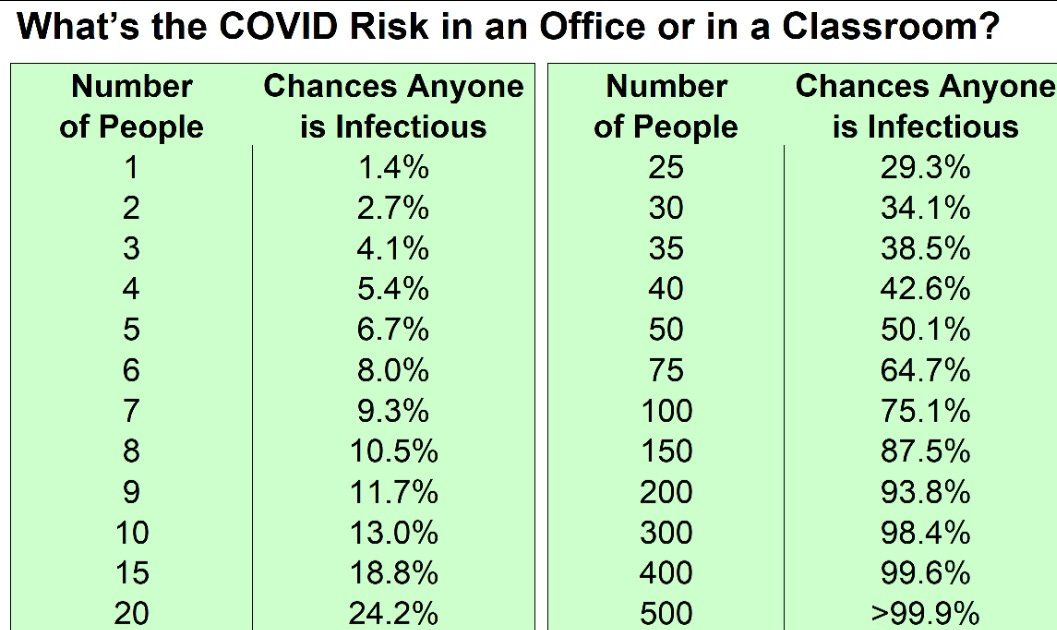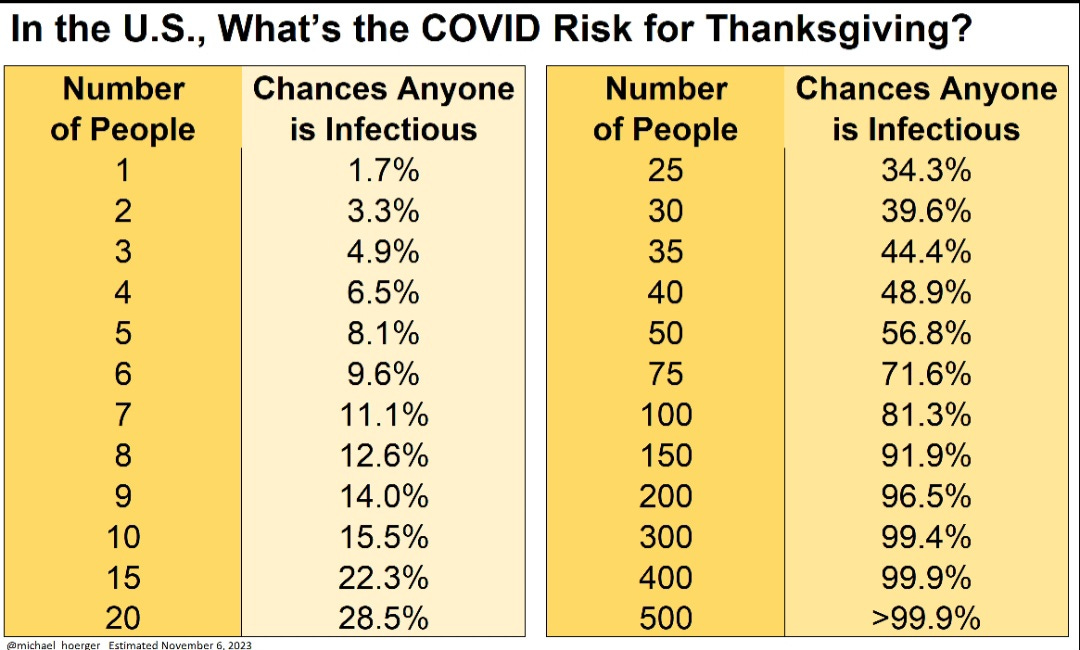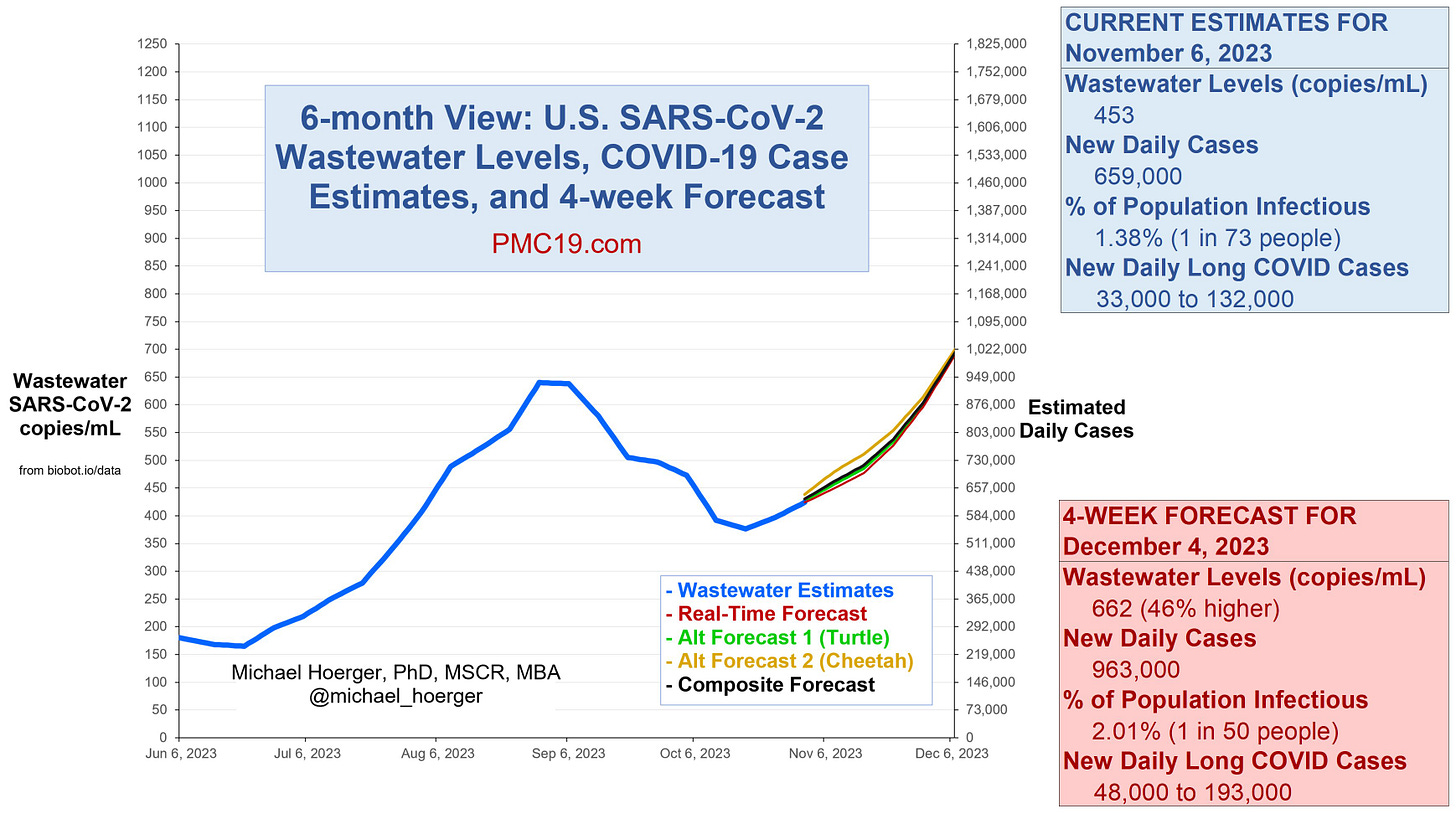Asymptomatic Transmission and the Current Odds of Infection/Long Term Health Implications of COVID Without Any Symptoms
Asymptomatic transmission may be over 100 times higher than symptomatic transmission. Someone without symptoms remains contagious for a minimum of 7 to 8 days, up to as many as 20 days!

Asymptomatic transmission, or in other words, people who are contagious but don’t have any symptoms, may be over 100 times higher than that of only symptomatic spread. The average time someone who doesn’t show any symptoms remains contagious is from 8 to 20 days. Despite research consistently showing contagiousness lasting a minimum of 7 to 8 days since 2020, the CDC is still only recommending that people with symptoms who test positive isolate for 5 days. The CDC guidance overlooks the scientific evidence, and jeopardizes the safety of millions of people.
The next time you are in a room without anyone coughing and begin to feel safe, remember that people without any symptoms significantly contribute to onward transmission.
The sections below present highlights of studies on asymptomatic transmission, how long asymptomatic individuals remain infectious, and the long-term impacts of COVID-19 despite not having any symptoms.
Note: Studies are linked on the published date.
Asymptomatic Transmission
1. "Deepest transmission clusters are those with the highest percentage of asymptomatic members. The correlation between proportion of asymptomatic and degree of transmission clusters showed that asymptomatic strongly contributed to the continuity of transmission within clusters" (June 2023)
2. "The chance of resurgence after the lifting of all interventions after 30 consecutive days with no symptomatic cases is also examined and emphasizes the danger presented by largely hidden infections while switching control strategies." (Jan 2023)
3. "The cumulative cases of existing asymptomatic spread will be over 100 times higher than that of only symptomatic spread. This confirmed the essential role of asymptomatic transmissibility."
"Asymptomatic spread is the fundamental difference between COVID-19 and SARS/MERS" (April 2022)
Possible Implications of an Asymptomatic Infection
1. Long-Term Consequences of Asymptomatic COVID Infection
"Our results suggested that there were long-term effects of asymptomatic SARS-CoV-2 infection, such as loss of taste or smell, fatigue, cough, and so on." (Jan. 2023)
2. Asymptomatic SARS-COV-2 infection in children's tonsils and adenoids.
“Positive immunostaining in adenotonsillar tissue samples suggest that lymphoid tissue can be a reservoir of SARS-CoV-2 and may play an important role in community dissemination.” (November 2022)
Children need these to help build a strong immune system. Having a persistent infection will cause untold levels of damage while aiding the virus in spreading for a longer duration.
3. Miscarriages may be caused by asymptomatic COVID infections.
"Persistence of SARS-CoV-2 in the first trimester placenta leading to transplacental transmission and fetal demise from an asymptomatic mother" (December 2020)
4. “This is the first study showing reduced fetal lung volume in otherwise healthy pregnant women with SARS-CoV-2 infection. This reduction was dependent on the timepoint of infection, indicating that the most significant results occurred in the third trimester, thereby overlapping with the saccular stage of lung development dedicated to the expansion of (future) air spaces.”
"Effects of SARS-CoV-2 on prenatal lung growth assessed by fetal MRI" (April 2022)
Note: A recent report from the National Center for Health Statistics shows that the provisional infant mortality rate for the United States in 2022 rose 3% from 2021, the first year-to-year increase in the rate since 2001 to 2002. From 2002 to 2021 the infant mortality rate declined 22%.
“Infant Mortality Rate Sees First Rise in 20 Years” (November 1, 2023)
The CDC post reports that mortality rates increased due to maternal complications and bacterial sepsis. We know that COVID causes maternal complications and weakens the immune system, leaving babies more susceptible to other infections. We know that one significant change occurred and that is the widespread, unmitigated transmission of COVID-19, yet the CDC doesn’t mention COVID-19 at all in their report.
Asymptomatic Infectious Period Lasts 8 + days
Importantly, we have known the infectious period lasts for a minimum of 8 days and as long as 20+ days, even without symptoms, since 2020.
"Asymptomatic individuals had median virus persistence duration of 8.87 days and 95 percentile duration of 20.70 days" (June 2020)
"Recommended home isolation duration for SARS-CoV-2 infected individuals in India should be extended from 17 days to at least 3 weeks" "regardless of symptom status."
“COVID-19-induced liver injury in infants, children, and adolescents"
"This review describes the liver manifestations in children with COVID-19, detailing its epidemiology, basic mechanisms, clinical expression, management, and prognosis in those with and without pre-existing liver disease and also children who have had earlier liver transplantation."
Have you ever wondered what the odds are that someone else in the room is infectious, importantly a classroom?
Mike Hoerger, PhD MSCR MBA (@michael_hoerger on X), crunched the numbers based on the current estimated rate of transmission. He says, “Although we are only at the start of the 8th wave, transmission is already high. Large groups amplify transmission. For example, in a group of 20-25, there's about a 25% chance someone would have infectious C19.”
Thanksgiving is just two weeks away in the U.S. This represents the odds of someone being contagious at a family event on Thanksgiving. The odds are increasing because the prevalence of COVID is growing at an exponential rate.
Dr. Hoerger's four-week forecast (pictured below) aligns with what is likely to occur, with the caveat mentioned below the graphic.
All these numbers are based on the current wastewater prevalence increasing, but they do not reflect how much higher the odds will get if a BA.2.86 (Pirola) sub-variant, like JN.1 (BA.2.86.1.1), continues to expand and becomes a significant percentage of cases. The likelihood of JN.1 or another Pirola sub-variant becoming a significant factor going into December is high. Keep in mind that if JN.1 (BA.2.86.1.1) continues on the trajectory it is on, then by early to mid-December, the exponential growth could rapidly increase in pace and put many more people at an increased risk of not only more moderate to severe symptoms but also long-term persistence.
We must take action NOW to prevent an untold level of long-term damage and to limit the number of hospitalizations and deaths.
This is Predictable
This is Preventable
We must work Together Against COVID Transmission









I assume that 100 means the asymptomatic person will infect 100 times more people than the symptomatic person due to behavior differences. That means there is an opportunity to cut COVID transmission by a factor of 100 if testing could be made routine for everybody whether they feel sick or not. I have heard that PCR tests can be just as effective when only the mouth is swabbed. If PCR tests could be free and the results processed rapidly then the spread could be reduced a lot.
It would also be interesting to know the probability of being asymptomatic given an infection exists and the raw contagiousness of asymptomatic people versus symptomatic people when their behaviors are the same. It seems to me that a person with symptoms is surely more contagious, but maybe that is wrong.
I want to thank you for your labour. We are in the midst of another wave here in New Zealand, the government recently moved to a 5 day isolation period (no longer legally mandated though) and remove masks. It's maddening to say the least. Your newsletter is one of the key ways I stay informed.